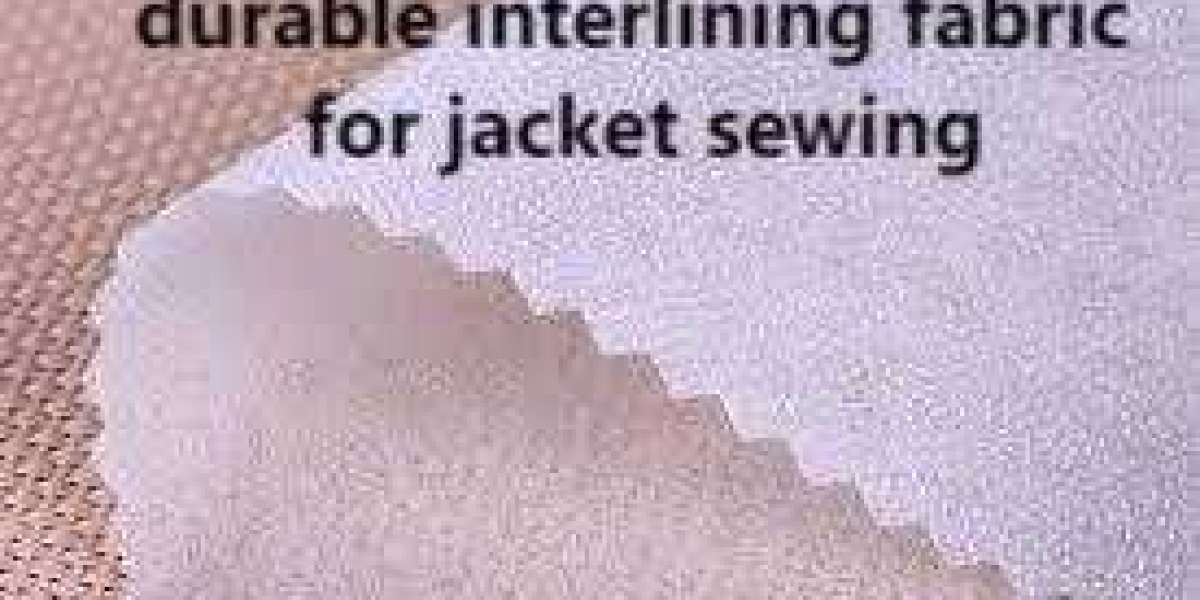Selecting the right Interlining is critical for achieving garments with proper structure, shape retention, and aesthetic appeal, and the choice of Interlining significantly impacts fabric drape, garment longevity, and wearer comfort. Awareness of available material types, bonding techniques, and performance characteristics allows designers and manufacturers to create high-quality apparel while minimizing material waste and production errors.
Material Selection and Properties
Garments require reinforcement layers with different physical properties depending on their function. Woven layers provide stiffness and support for collars, cuffs, and tailored items. Non-woven layers offer lightweight stability, ideal for shirts, blouses, and delicate fabrics. Knit variants provide flexibility and recovery, suitable for stretch garments or tailored suits that require mobility. Choosing the correct material ensures durability, consistency, and fabric compatibility.
Bonding and Application Techniques
Attachment methods influence both the appearance and longevity of finished garments. Heat-activated bonding, commonly used for fusible products, allows smooth adhesion and reduces sewing time. Sew-in techniques enable repositioning during fitting and preserve fabric texture, essential for high-end designs. Advanced methods, such as adhesive-free lamination or ultrasonic bonding, provide precise reinforcement without damaging fabrics, maintaining a professional finish and structural integrity.
Performance and Fabric Compatibility
The reinforcement layer affects drape, insulation, and garment stability. Heavier materials provide firmness and resilience for structured pieces, while lighter options maintain flexibility and comfort. Evaluating shrinkage, moisture absorption, and pressing performance ensures garments maintain shape and appearance after repeated use. Matching the reinforcement to the fabric prevents distortion and ensures a polished, long-lasting final product.
Innovative Design Applications
Modern garment design integrates specialized reinforcement layers for functional and aesthetic purposes. Stretchable or breathable layers support activewear or summer garments, while reinforced options strengthen high-stress areas like shoulders, waistbands, or cuffs. Thoughtful integration enhances fit, comfort, and product longevity. Designers benefit from testing sample applications before full production to refine placement and optimize garment performance.
Sustainability and Production Efficiency
Sustainable material selection reduces environmental impact and improves operational efficiency. Recyclable fibers, minimized waste, and optimized cutting layouts lower both ecological footprint and production costs. Efficient use of reinforcement materials reduces excess inventory and supports streamlined manufacturing processes without sacrificing quality or performance. These practices align with consumer preferences for eco-conscious apparel and help brands meet regulatory standards.
Quality Assurance and Inspection
Maintaining consistency across production batches is essential. Inspection includes dimensional stability, adhesion strength, and surface smoothness. Sample testing prior to mass production identifies potential defects, reduces waste, and ensures uniformity. Proper documentation and traceability of batches maintain accountability and meet industry standards, safeguarding both manufacturer and consumer confidence.
Handling and Storage Best Practices
Proper storage conditions preserve material properties and extend usability. Controlled humidity and temperature prevent premature adhesive activation or distortion. Careful handling during garment construction avoids wrinkles and fabric damage. Staff training ensures that materials are applied correctly, maintaining both quality and production efficiency.
Supply Chain Management and Sourcing
Reliable sourcing ensures timely delivery and consistent quality. Evaluate supplier capabilities, lead times, and material certifications. Transparent communication about batch sizes, delivery schedules, and production requirements prevents delays. Effective supply chain management supports continuous manufacturing and maintains competitive product availability in the market.
Market Trends and Functional Innovations
Emerging trends include multifunctional layers that offer thermal regulation, stretch memory, or eco-friendly composition. Integrating these innovations into garments enhances performance, comfort, and market appeal. Staying informed about industry developments helps manufacturers remain competitive and responsive to consumer demands.
Final Selection Checklist
When selecting reinforcement layers, consider material type, bonding technique, fabric compatibility, durability, sustainability, supplier reliability, and quality control measures. Pilot tests and sample evaluations reduce production risks and ensure optimal results in finished garments.For detailed guidance on material types, applications, and sourcing, visit https://www.interlining-factory.com/news/what-is-interlining-types-applications-and-more.html








